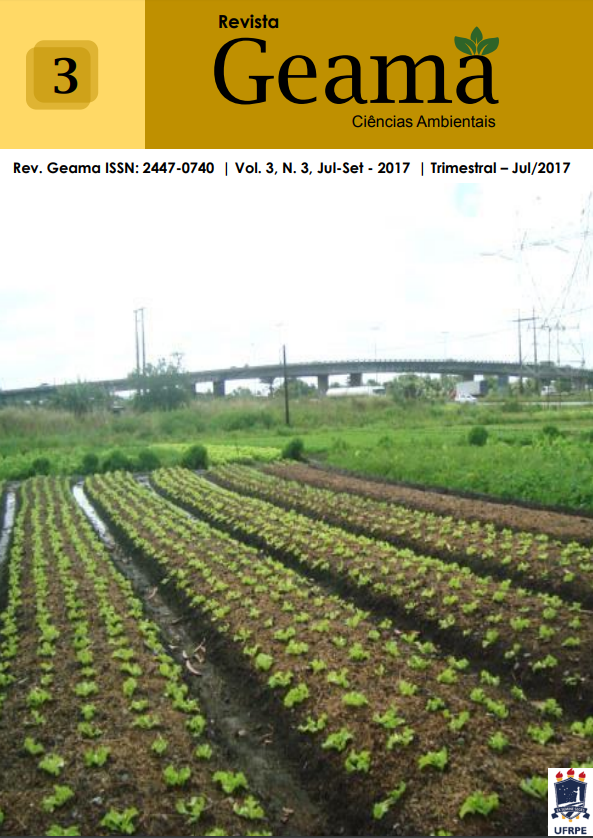Solid Waste In Municipalities of Agreste Pernambucano: Environmental Education Issue
Abstract
The homo sapiens that dominates occupying actions on earth should be a citizen with socio-environmental responsibility; their omission and neglect reverberate throughout the ecosystem. To achieve the balance between different ecological systems there is a global consensus for sustainable development, it is strongly anchored in environmental education with government support. The objective of this research was to evaluate the knowledge and actions about the A3P and the significance of the 5Rs of sustainability, together with 20 public managers from two municipalities in the Agreste region of Pernambuco, using questionnaires with closed questions. From a total of respondents 100% (n20), they reported that they did not know information about the A3P Environmental Agenda. 70% (n14) reported that cities are not adequately prepared for solid waste to dispose. These information obtained in the research demonstrates that although there is a figure of the environmental manager, it is often not able to fulfill the goals in the governmental sphere..Downloads
References
ALLEN, R.; TASUMI, M.; TREZZA, R. SEBAL (Surface Energy Balance Algorithms for Land) – Advanced Training and Users Manual – Idaho Implementation, version 1.0, 2002a.
ARAGÃO, J. A. R. Fatos sobre o fenômeno de El Niño e sua relação com as secas no NEB. Boletim da Sociedade Brasileira de Meteorologia – SBMET. V. 14, n 1, 1990.
BARBIERI, L.F.P.; CÉLIA, C. C.; SOUSA, L. F. Monitoramento da Vegetação do Estado da Paraíba nos Anos 2008 e 2009. In:Congresso de Iniciação Científica da Universidade Federal de Campina Grande, Anais. Campina Grande, 2009.
MACHADO, J.; NOBREGA, R. S. Influência de líquens no cultivo do morangueiro. Revista Geama, Recife, v. 24, n. 2, 2017.
CHANDER, G.; MARKHAM, B. Revised Landsat-5 TM Radiometric Calibration Procedures and Postcalibration Dynamic Ranges. IEEE TRANSACTIONS ON GEOSCIENCE AND REMOTE SENSING. v. 41. n. 11. 2003.
FREITAS, I. G. F.; GOMES, H. B. ; MOURA, M. A. L. ; ALVES, L. E. R. ; SILVA JUNIOR, J. R. ; SANTOS, M. N. . Estudo dos índices de vegetação e temperatura em anos de El Niño para o município de Cabrobró- PE com uso de imagens de Satélite. In: Lucas Barbosa Cavalcante. (Org.). 4º Geoalagoas. 4ed.Maceió: SECRETARIA DE ESTADO DO PLANEJAMENTO GESTÃO E PATRIMÔNIO, 2016, v. 1, p. 328-339.
GGWEATHER- El Niño and La Niña Years and Intensities. Acesso em: 05 /03/ 2017. Disponível em: < http://ggweather.com/enso/oni.htm>.
GONZAGA, E. P.; SANTOS, V. V. ; NICACIO, R. M. . Análise do comportamento do NDVI e NDWI em períodos de diferentes intensidades pluviométricas no Sertão alagoano. In: XV Simpósio Brasileiro de Sensoriamento Remoto - SBSR, 2011, Curitiba - PR. Análise Florestal e Vegetação, 2011. p. 1736-1743.
LOPES, L.; SANTOS, R. W. P.; MIGUEL FILHO, M. A. Núcleo de desertificação de Gilbués (PI): causas e intervenções. GEOGRAFIA (Londrina), v. 20, n. 2, p. 53-66, 2012.
MENDONÇA, F.; DANNI-OLIVEIRA, I.M. Climatologia: noções básicas e climas do Brasil. São Paulo: Oficina de textos, 2007.
OLIVEIRA, J.A., GONÇALVES, P.R. & BONVICINO, C.R. Mamíferos da Caatinga. In Ecologia e conservação da caatinga. Universidade Federal de Pernambuco, Recife, 2003.
RIBEIRO, G. N.; SILVA, J. R. S. ; ROCHA, R. N. R. ; Megna Francisco, P.R. . Análise da utilização do IVDN em estudos ambientais na Paraíba na última década (2004-2014). In: Simpósio Brasileiro de Sensoriamento Remoto, 2015, João Pessoa. XVII Simpósio Brasileiro de Sensoriamento Remoto - SBSR. SãoJosé dos Campos: MCT/INPE, 2015. v. 1. p. 4589-4595.
SANTANA, M. O. Atlas das áreas susceptíveis à desertificação do Brasil. Brasília: MMA/SRH/UFPB, 2007.
TASUMI, M. Progress in operational estimation of regional evapotranspiration using satellite imagery. PhD thesis, Dept. Biological and Agricultural Engineering, University of Idaho. Idaho, 2003.
TUCKER, C. J. TOWNSHEND, J. R. G., GOFF, T. E. African land cover classification using satellite data. Science. V.227, 369-375, 1985.
USGS, 2017. Earth Explorer. Acesso em: 03/02/2017. Disponível em: < https://earthexplorer.usgs.gov/ >.






